Our C2C journey has finally begun! There have been times over the last 2 years when I thought this day would never arrive. At 66 years of age, health issues are never far from your mind …. my father sadly died at this age from a ‘heart attack’. But my cardiologist says I’m good to go! Listen to your body, he says. ‘If you feel like you need a rest, then have one’ …. these were his parting words. Sounds like good advice for everyone to me, no matter what their age!
When I awoke at 4.00 am (all the excitement), it was raining!
But the rain eased and we enjoyed a cloudy, but mainly fine day.
So we departed our St Bees B&B, fortified with a full English breakfast and made our way down to the beach where the C2C starts. Tradition has it that, before you start, you should dip your toes (boots) in the Irish sea and select a small stone to carry to the east coast to cast into the North Sea at Robin Hoods Bay. Well …. we’ve started what may become a new tradition. As well as dipping our boots in the water, we selected three stones. The first was kissed with the second and then cast into the Irish Sea. The second was secreted in each of our packs to be carried across England and then cast into the North Sea. This will mark the conclusion of our C2C Odyssey at Robin Hoods Bay. And the carefully selected third stone is a keeper (don’t worry, there are tons of rocks on the beach!). So our journey begins ….
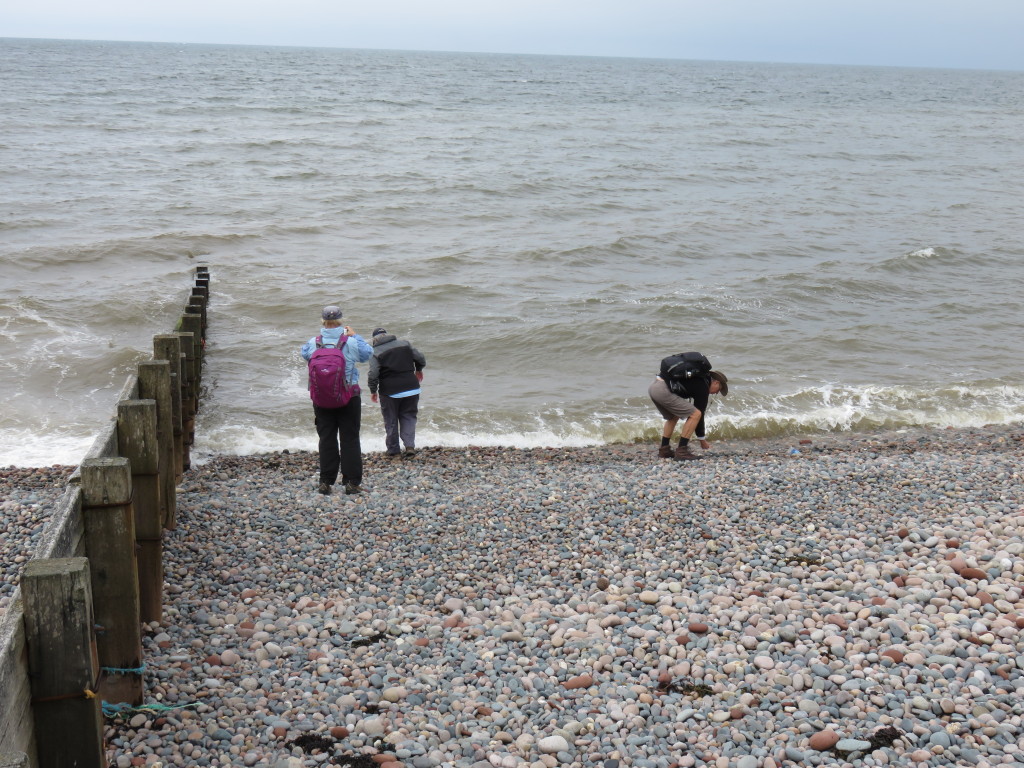 Here are three members of our team completing this ritual. Doug, the Soil Scientist in our group would have no part in it. It’s just not right to mess with the geology of England by carrying rocks from one side of the country to the other! And as for carrying rocks to the other side of the world!
Here are three members of our team completing this ritual. Doug, the Soil Scientist in our group would have no part in it. It’s just not right to mess with the geology of England by carrying rocks from one side of the country to the other! And as for carrying rocks to the other side of the world!
Then it was off to have the obligatory picture taken at the official starting point for the walk (see featured image) and we were on our way.
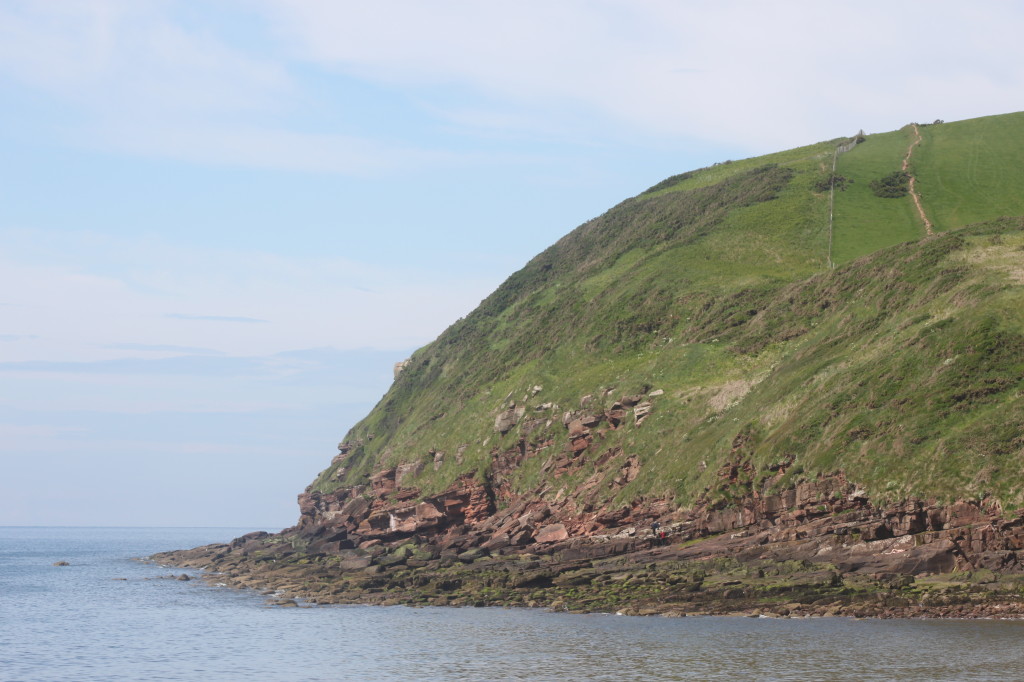 First we had to make our way up to the top of the St Bees headland, an ascent of about 100 m. Then it was time to take a last look at the lovely St Bees and we were on our way.
First we had to make our way up to the top of the St Bees headland, an ascent of about 100 m. Then it was time to take a last look at the lovely St Bees and we were on our way.
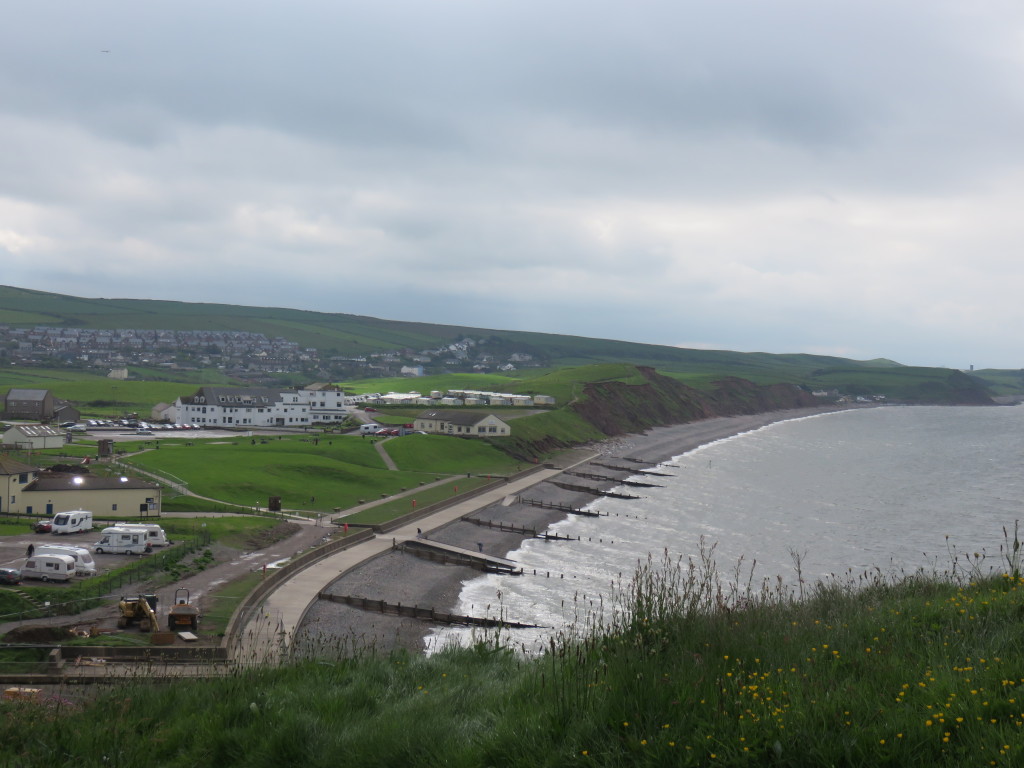 It was close to high tide when we left, so there was only a rocky shore. But when Julia Bradbury was here filming her 6 part TV series on the C2C (as screened on SBS several years ago), the tide was out, so there were several hundred metres of sand to traverse to reach the water’s edge. No such problems for us!
It was close to high tide when we left, so there was only a rocky shore. But when Julia Bradbury was here filming her 6 part TV series on the C2C (as screened on SBS several years ago), the tide was out, so there were several hundred metres of sand to traverse to reach the water’s edge. No such problems for us!
The outstanding feature of our first day was the magnificent walk along the St Bees Head cliff-top.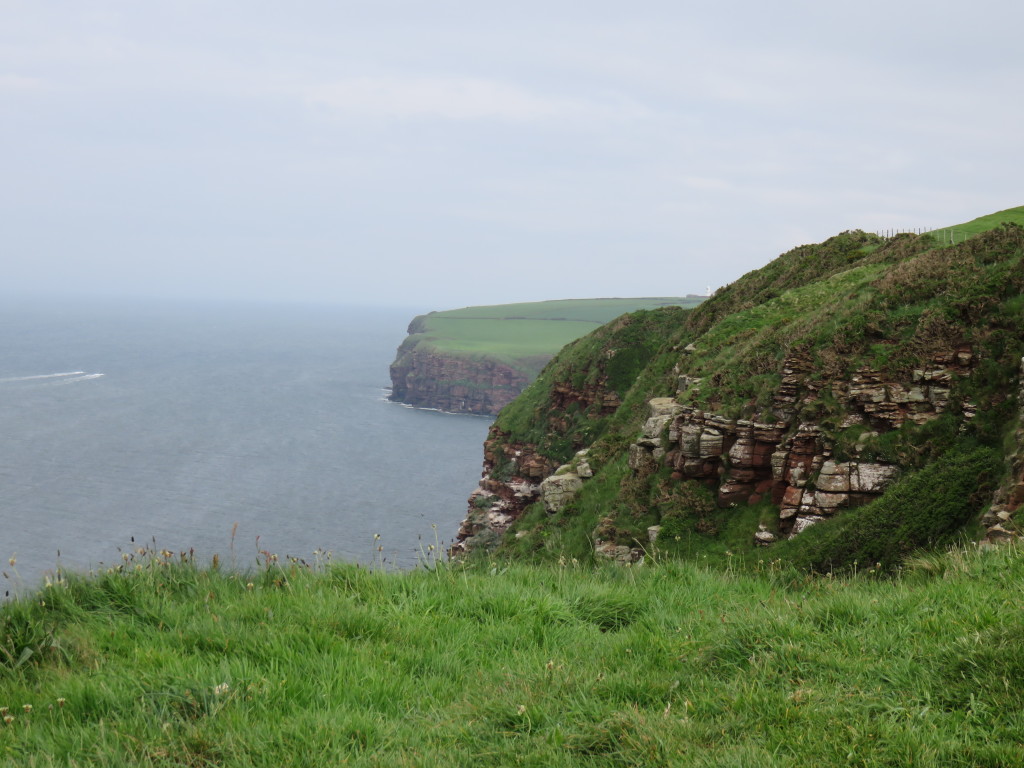
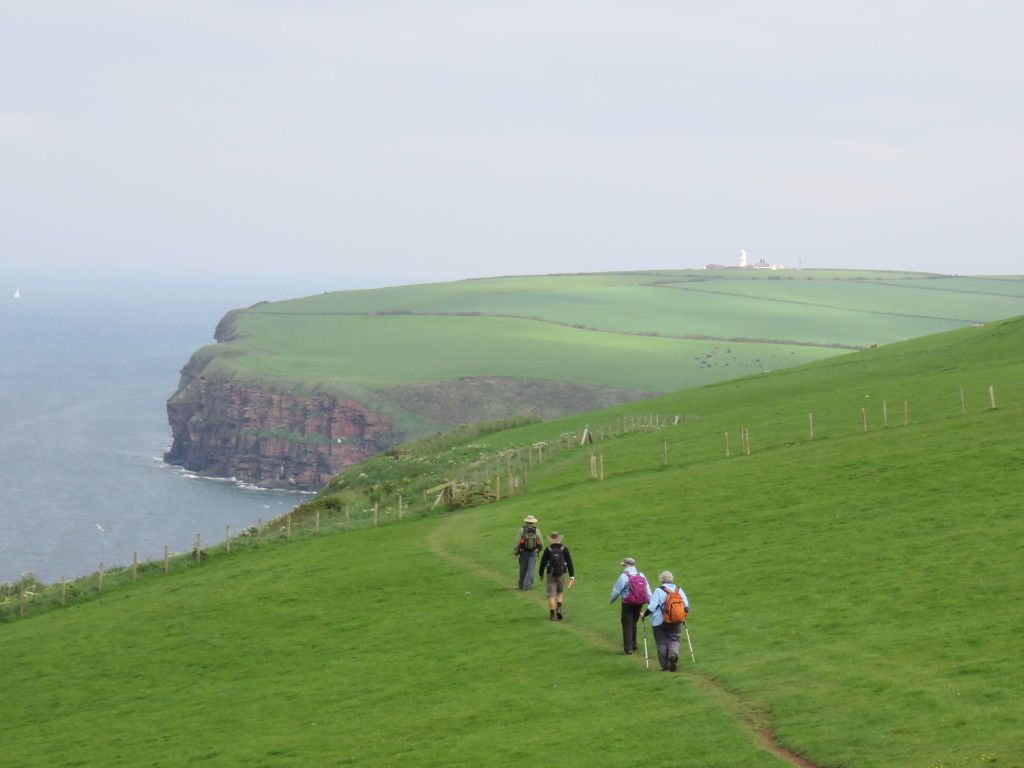 My co-walkers were setting a brisk pace, heading towards the first inlet in the headland – Fleswick Bay. This is an area noted for its abundant birdlife on the cliffs. And our first glimpse of the St Bees Lighthouse can be seen in the distance.
My co-walkers were setting a brisk pace, heading towards the first inlet in the headland – Fleswick Bay. This is an area noted for its abundant birdlife on the cliffs. And our first glimpse of the St Bees Lighthouse can be seen in the distance.
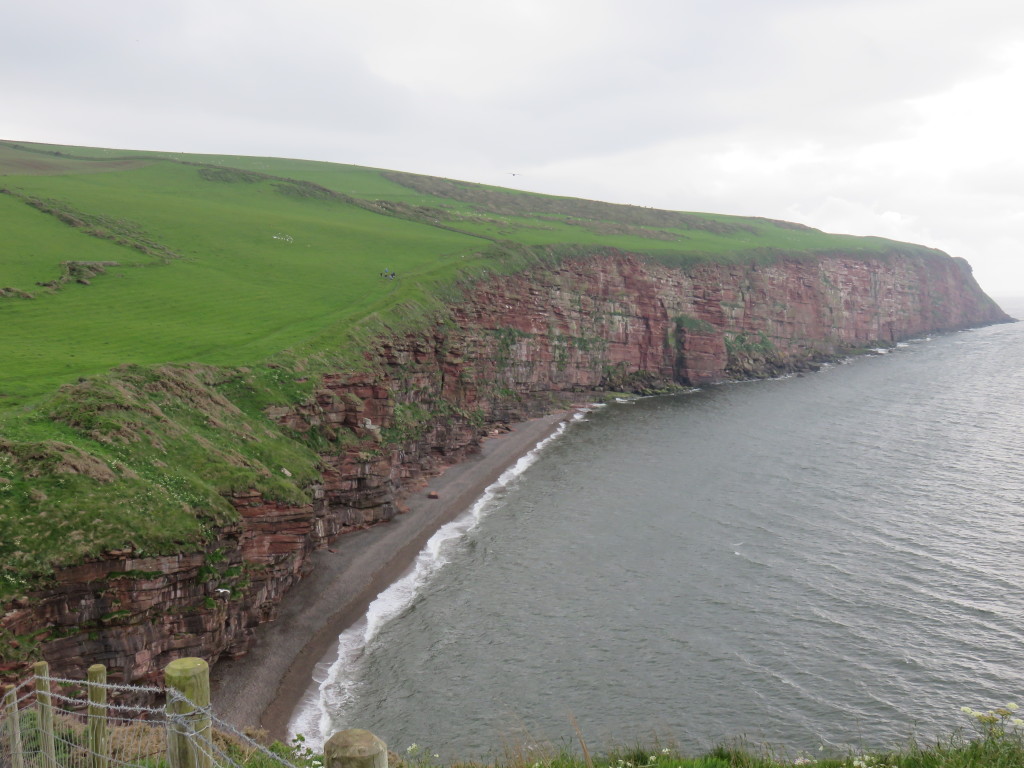 The views of the cliffs are simply spectacular. And the bird-life is a twitcher’s paradise. I know very little about birds, but enjoyed the spectacle of it, and captured a few images as we moved along.
The views of the cliffs are simply spectacular. And the bird-life is a twitcher’s paradise. I know very little about birds, but enjoyed the spectacle of it, and captured a few images as we moved along. 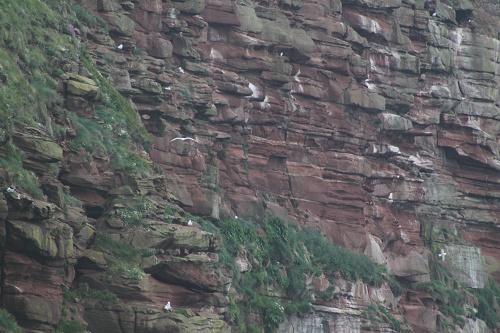
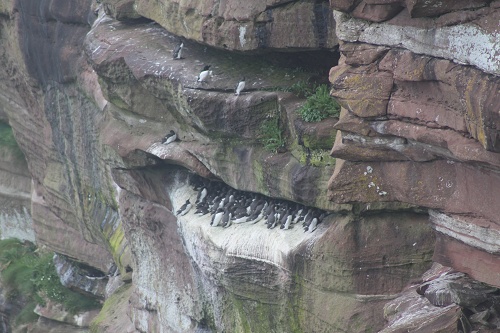
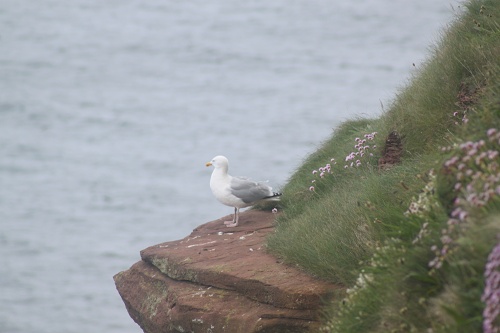
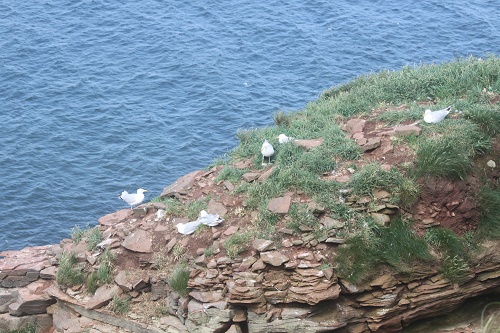
At one point, just beyond Fleswick Bay, a group of seagulls were hovering in the updraft of the cliff.
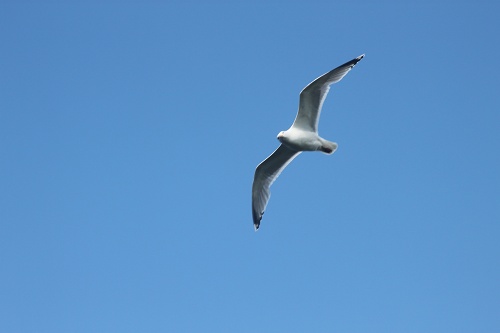
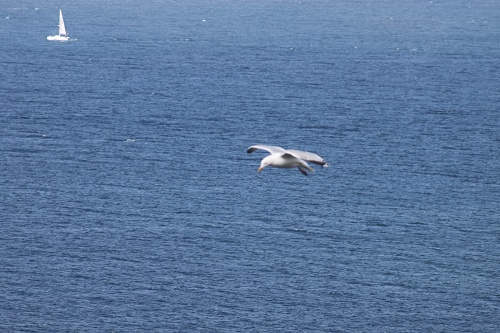 And a fight broke out immediately after this photo was taken!
And a fight broke out immediately after this photo was taken! 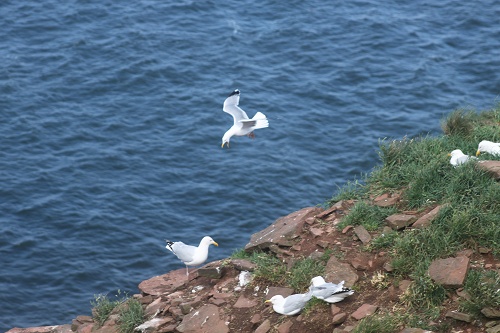 Different people walk at different speeds. But some seem to move so quickly that it is difficult to see how they can appreciate their surroundings. We called this group the Yorkshire fell flyers.
Different people walk at different speeds. But some seem to move so quickly that it is difficult to see how they can appreciate their surroundings. We called this group the Yorkshire fell flyers.
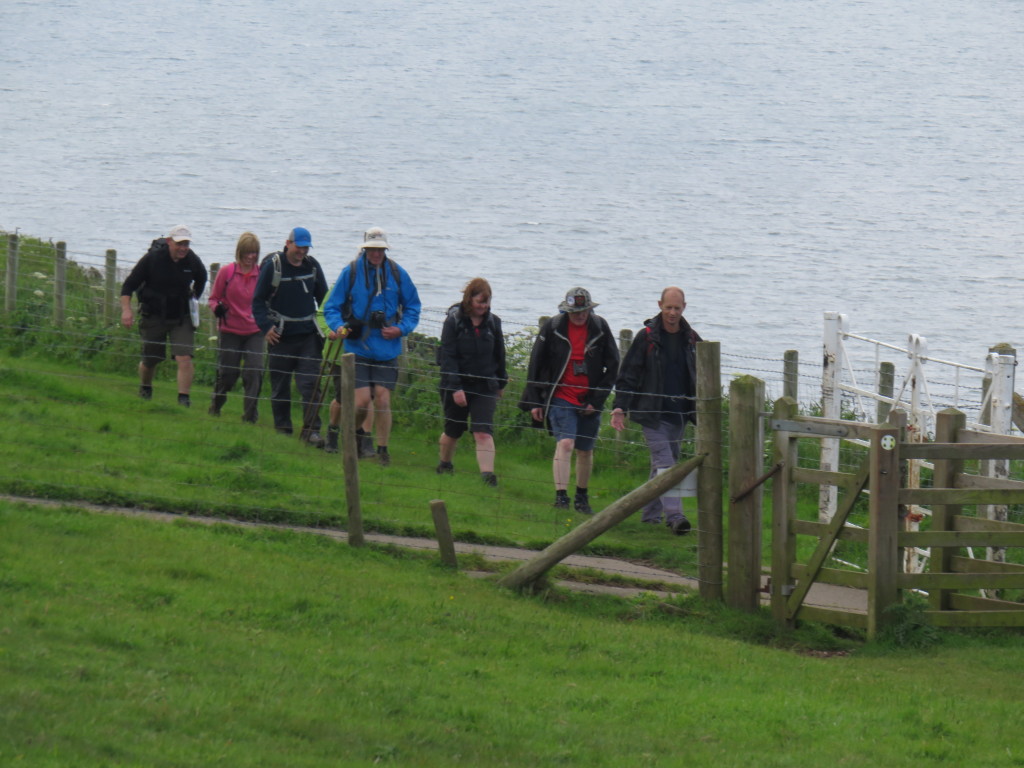 We saw them approaching us from a distance way back behind Fleswick Bay and pretty soon they were on our tails and pressing to get past ….. in an area where the path was very close to the cliff-top and quite dangerous. But we soon found a space to let them through.
We saw them approaching us from a distance way back behind Fleswick Bay and pretty soon they were on our tails and pressing to get past ….. in an area where the path was very close to the cliff-top and quite dangerous. But we soon found a space to let them through.
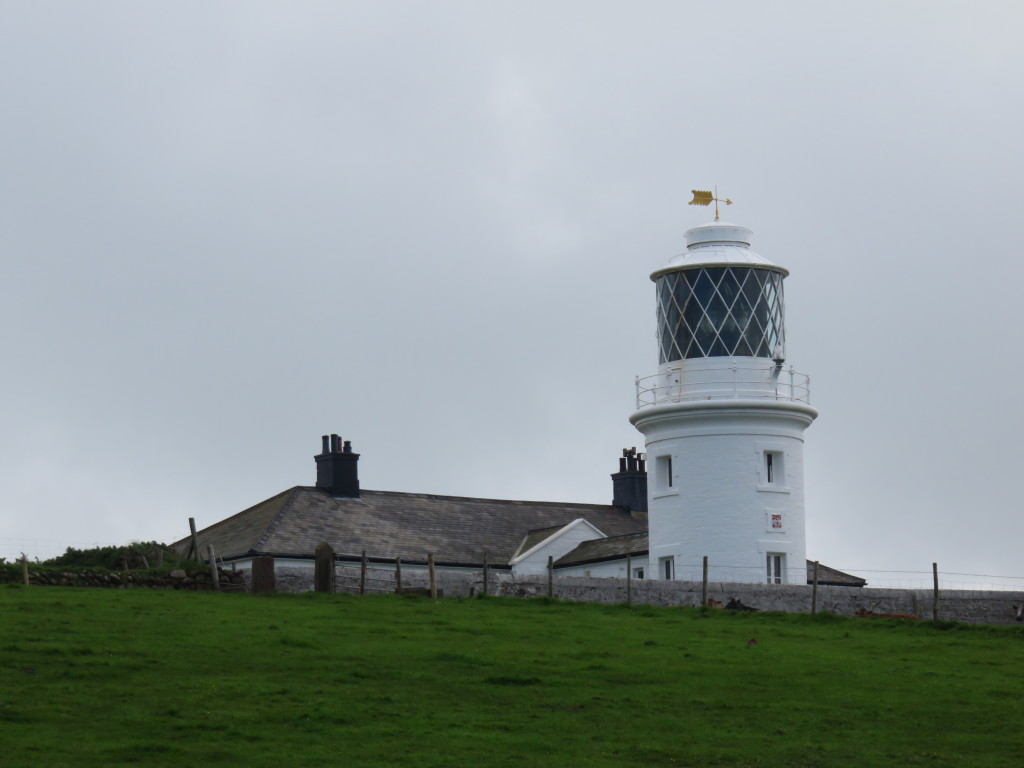 The St Bees Lighthouse is interesting in that it was originally lit by burning coal. I’ve not heard of this before, but apparently it was upgraded following many complaints from mariners about the poor quality of the light that it produced. The facility is no longer staffed. Sadly tours of the lighthouse that were available to C2C walkers until recently are no longer offered.
The St Bees Lighthouse is interesting in that it was originally lit by burning coal. I’ve not heard of this before, but apparently it was upgraded following many complaints from mariners about the poor quality of the light that it produced. The facility is no longer staffed. Sadly tours of the lighthouse that were available to C2C walkers until recently are no longer offered.
There is always a fence along the cliff-top. Sometimes the path is on the land-ward side of the fence, as seen here. These are predominantly sheep pastures.
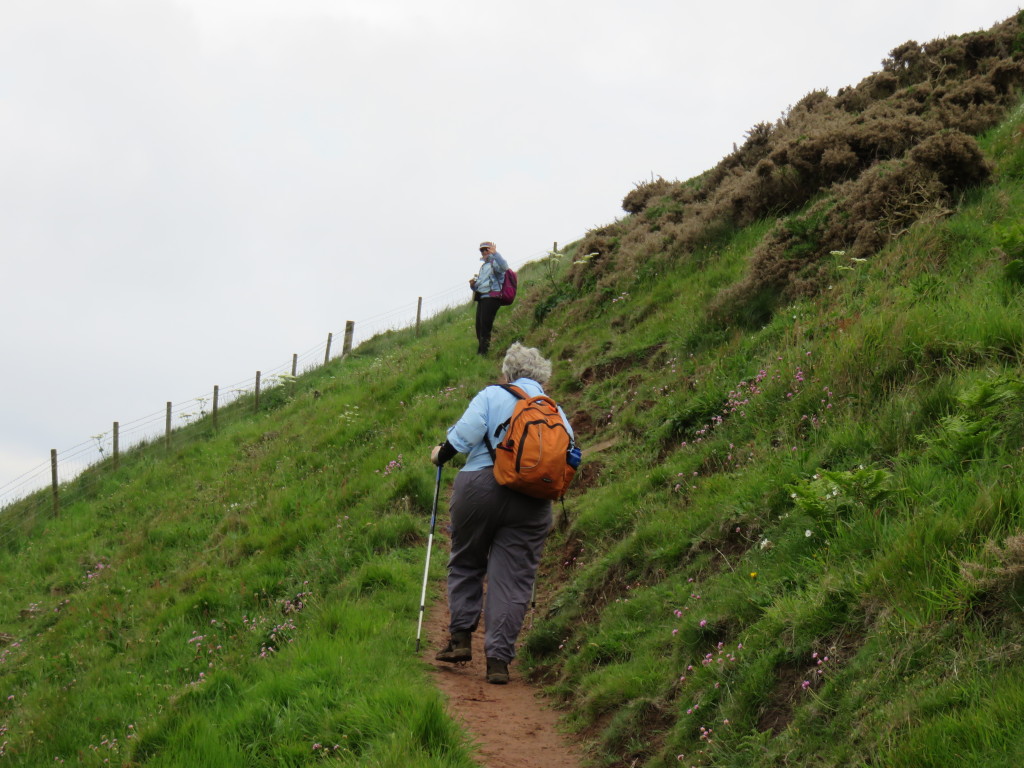 On other occasions, it is on the sea-ward side, and is quite dangerous in parts. But a constant delight is the wildflowers that can be seen growing on the seaward side where they are protected from grazing.
On other occasions, it is on the sea-ward side, and is quite dangerous in parts. But a constant delight is the wildflowers that can be seen growing on the seaward side where they are protected from grazing.
In this area, the pastures are mainly grazed by sheep. This little family seemed to be pretty content! and there were mainly twin lambs in this area – good genetics, I think.
And heading out into the Irish Sea, we saw a fishing trawler.
It may well have caught our dinner …. four of us later had seafood for our evening meal in a local pub in Cleator. In fact, Laurie declared that his Sea Bass dinner was the best meal he’d eaten since leaving home – even though he and Tricia had spent a week in Paris on the way to England!
A feature of our walking day is to boil the billy once or twice along the way.
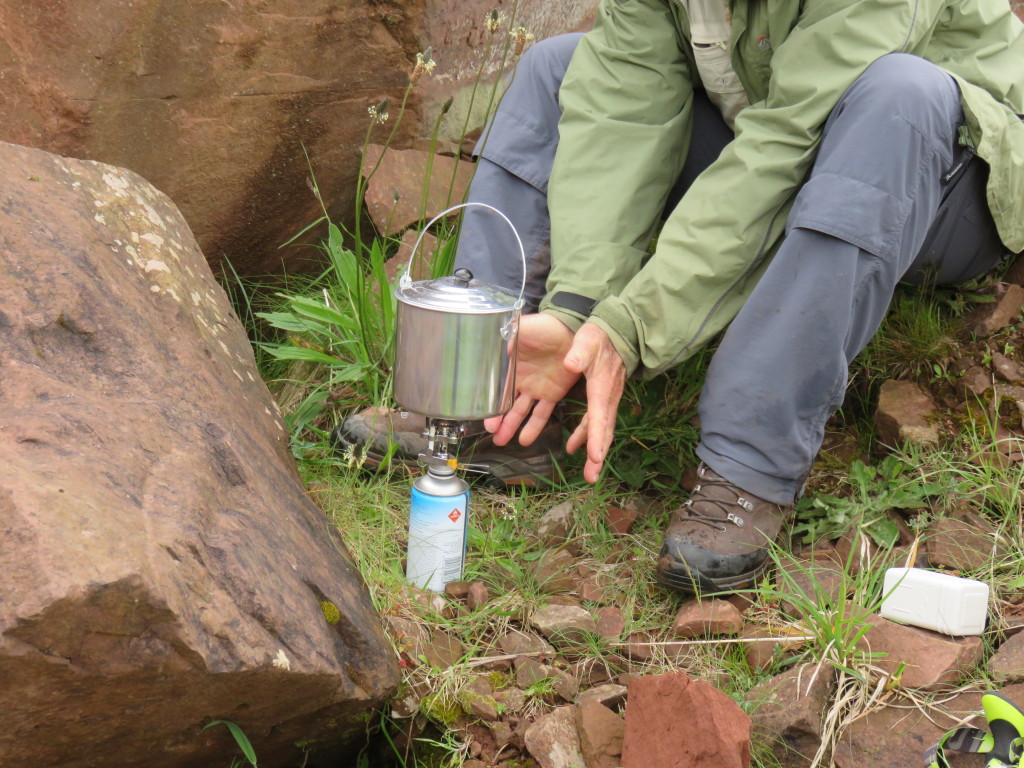 We find this to be a pleasant and refreshing ritual.
We find this to be a pleasant and refreshing ritual.
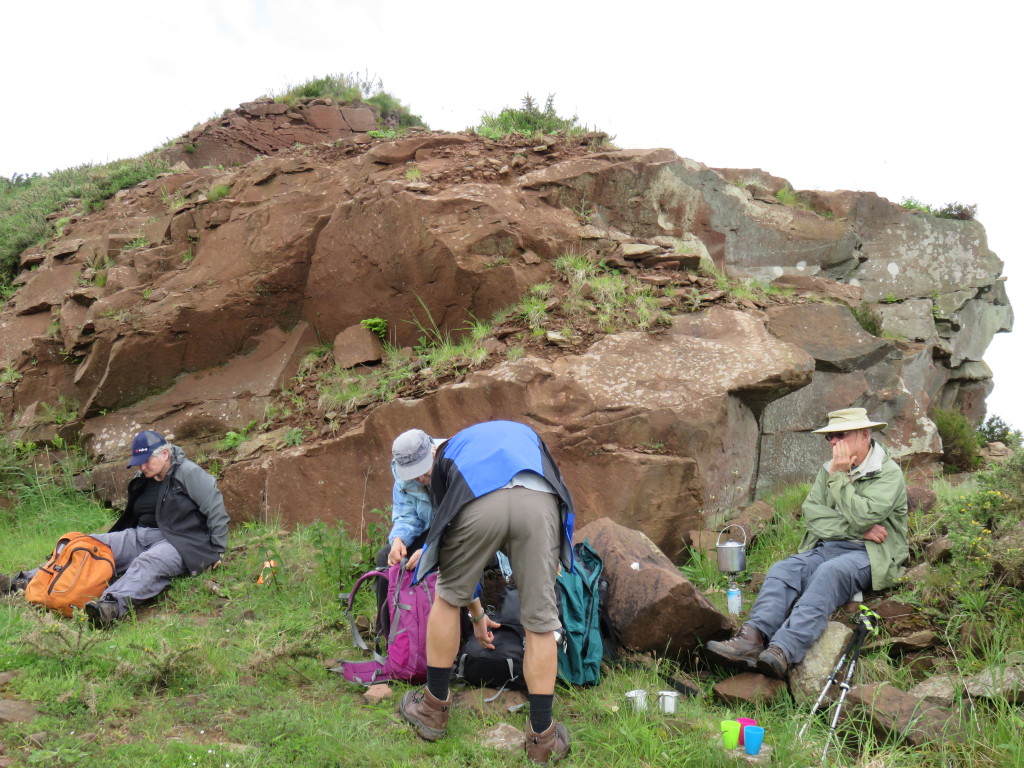 Here, we were very close to an old quarry, the signal for us to turn east towards Robin Hoods Bay! The C2C path then took us along some local roads as well dedicated walking paths to the small village of Sandwith (Pron: Sanith). There was a pleasant village green and many attractive gardens. This was a rare sighting of tulips – surprising to us given the time of year.
Here, we were very close to an old quarry, the signal for us to turn east towards Robin Hoods Bay! The C2C path then took us along some local roads as well dedicated walking paths to the small village of Sandwith (Pron: Sanith). There was a pleasant village green and many attractive gardens. This was a rare sighting of tulips – surprising to us given the time of year.
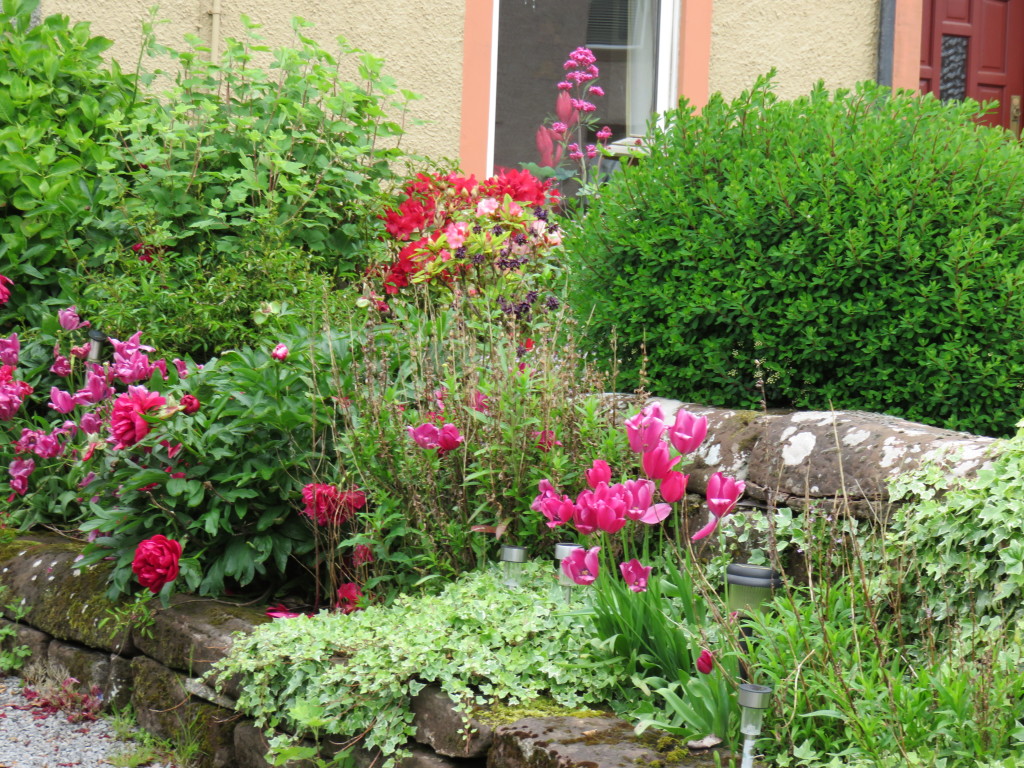 There was also quite a crowd enjoying a convivial interlude outside the local pub on their Monday Bank Holiday (what’s that all about …. we’ve had a few explanations? But not sure?).
There was also quite a crowd enjoying a convivial interlude outside the local pub on their Monday Bank Holiday (what’s that all about …. we’ve had a few explanations? But not sure?).
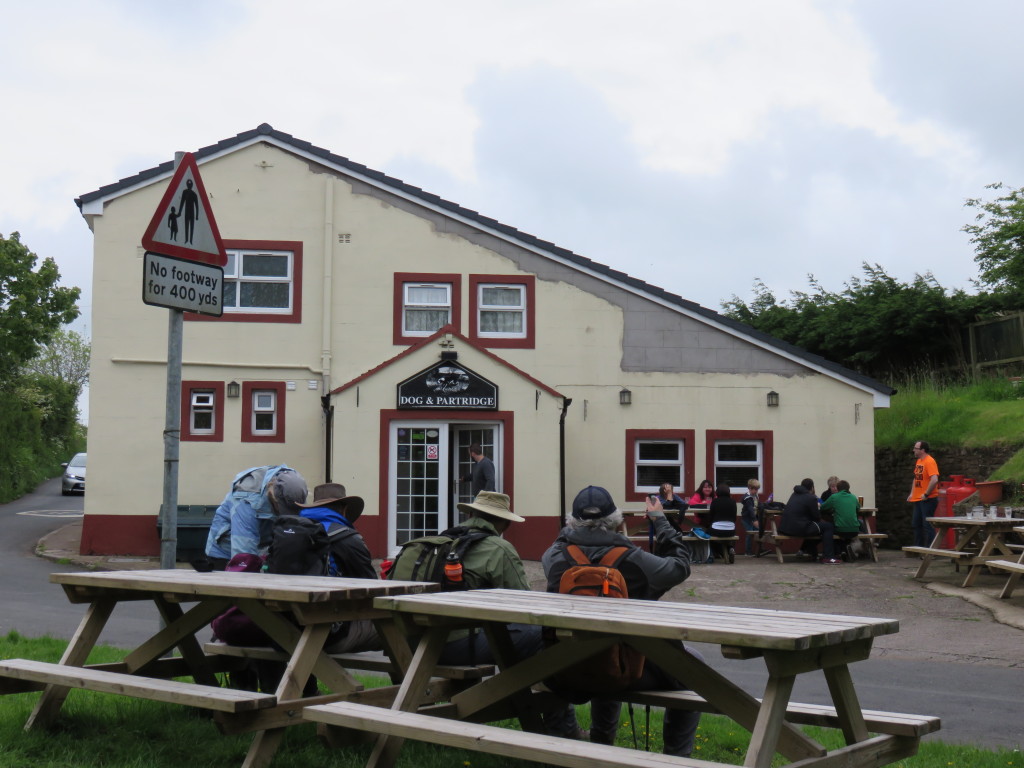 That’s our mob in the foreground having a little rest. Definitely no ales until the walking is done!
That’s our mob in the foreground having a little rest. Definitely no ales until the walking is done!
We were soon in the small village of Moor Row, close to Cleator. The final approach was along a very well constructed hiking and cycling path along a disused railway line. And lots of lovely trees and shrubs along the way as well. Should be more of them ….. nothing steep here!
We were all very pleased to see the sign for Jasmine House as our delightful overnight B&B hove into view.
Vital stats of Stage 1:
Distance – 14 km
Ascent – ca. 250 m
Level of difficulty – easy
Highlight – cliff-top walk
And finally, a note to long-suffering readers. I’m new to blogging and so I’m learning ‘on the job’, with no-one to point me in the right direction. Brian (my brother and the owner of this blog) kindly gave me a couple of quick lessons before I left home – without that I would have been sunk! But you’ll be pleased to know that I am starting to swim faster! As well, there has been no WiFi on several evenings, even in one case where the management claimed that my bedroom was the best place in the building to pick it up! I’m also working with a notebook computer with Windows RT on it – new to me and not the best for blogging, I suspect.
So please bear with me if you wish to follow this account of our remarkable journey! I’ll get the blogs up as quickly as I can. But I suggest that you subscribe to this blog page – then, you will get an email when new posts appear and you’ll be able to follow our progress as I get them up! (Too many exclamation marks, I know. But I’m having that sort of experience.)

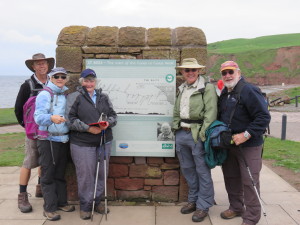
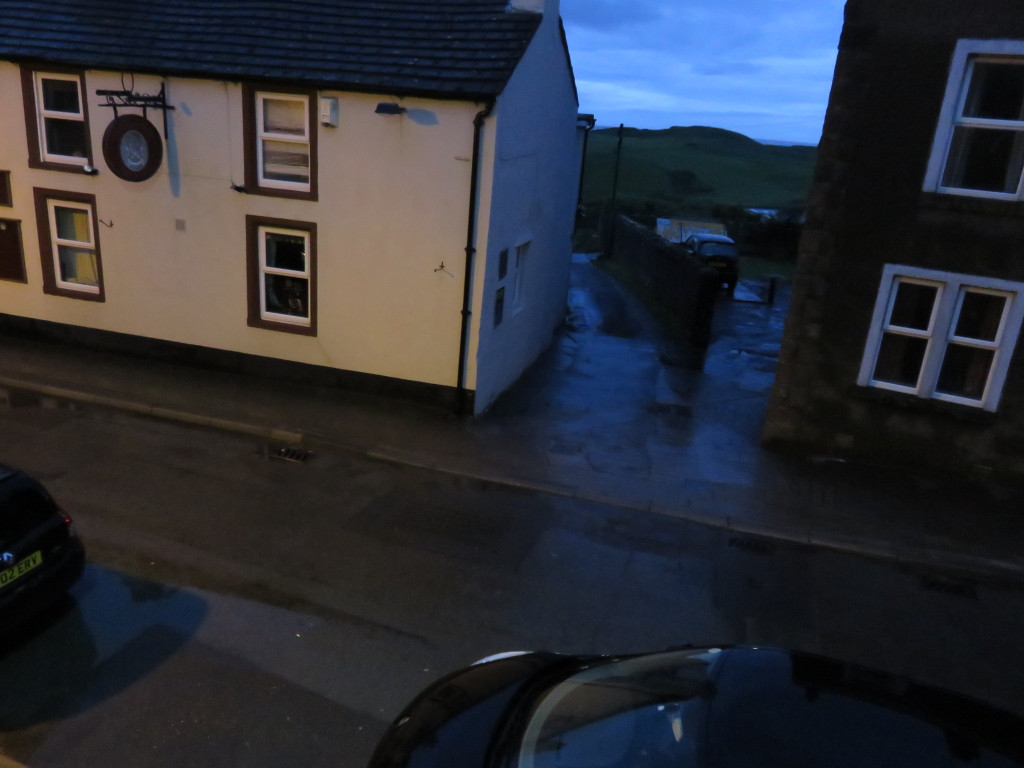
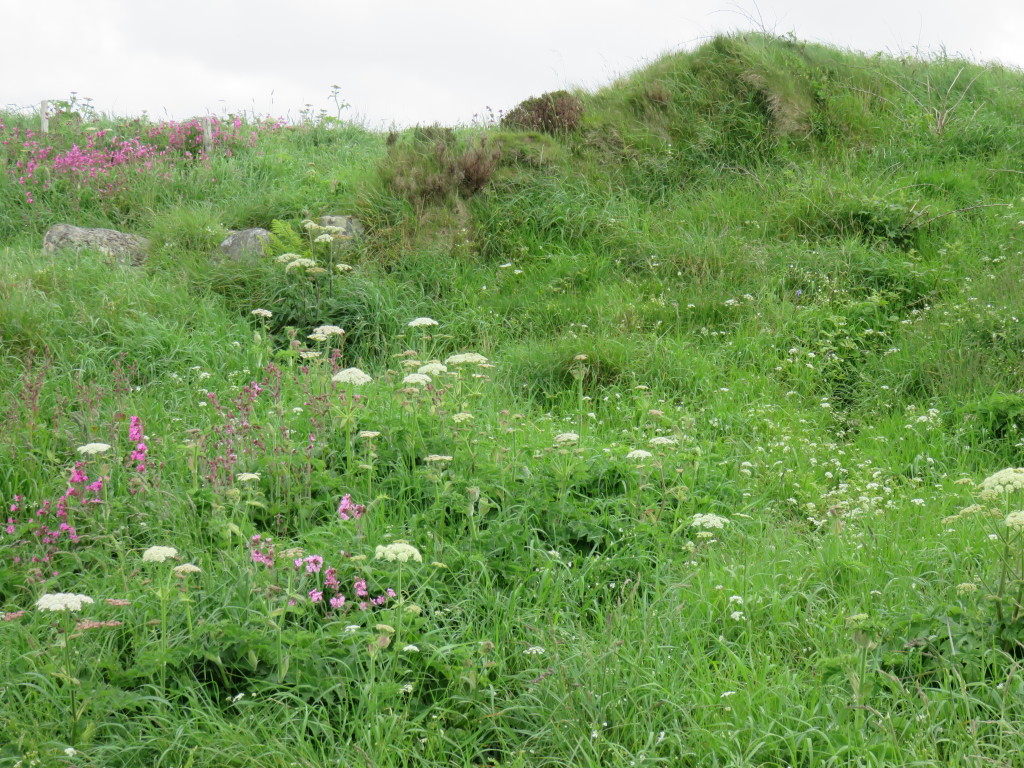
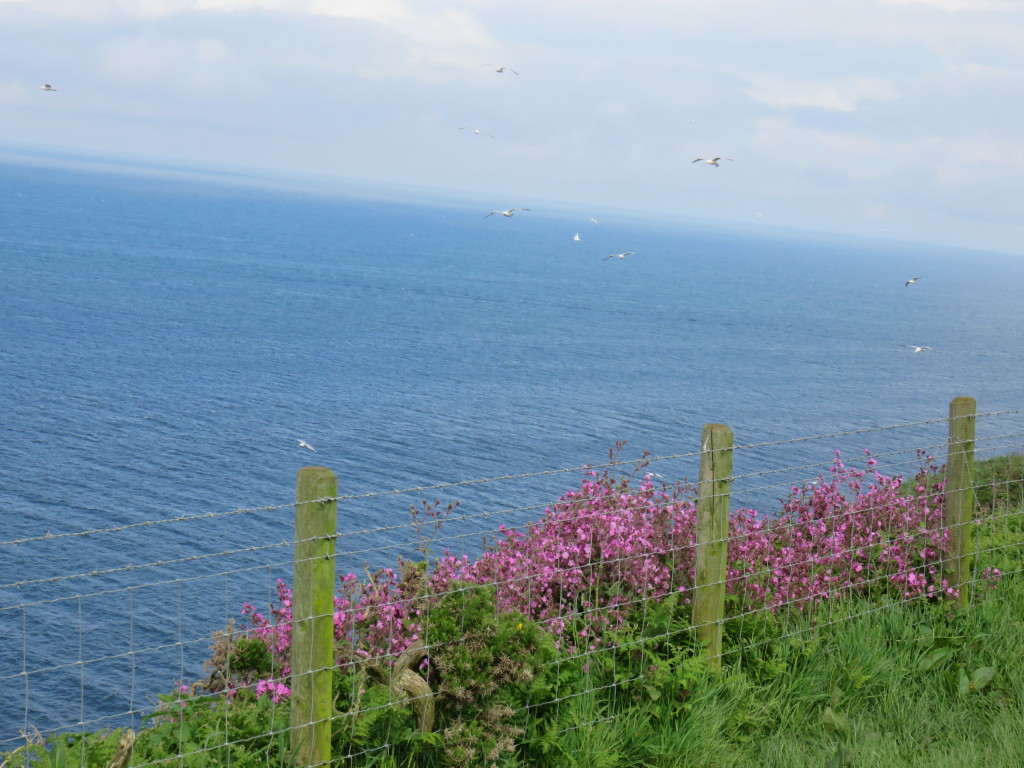
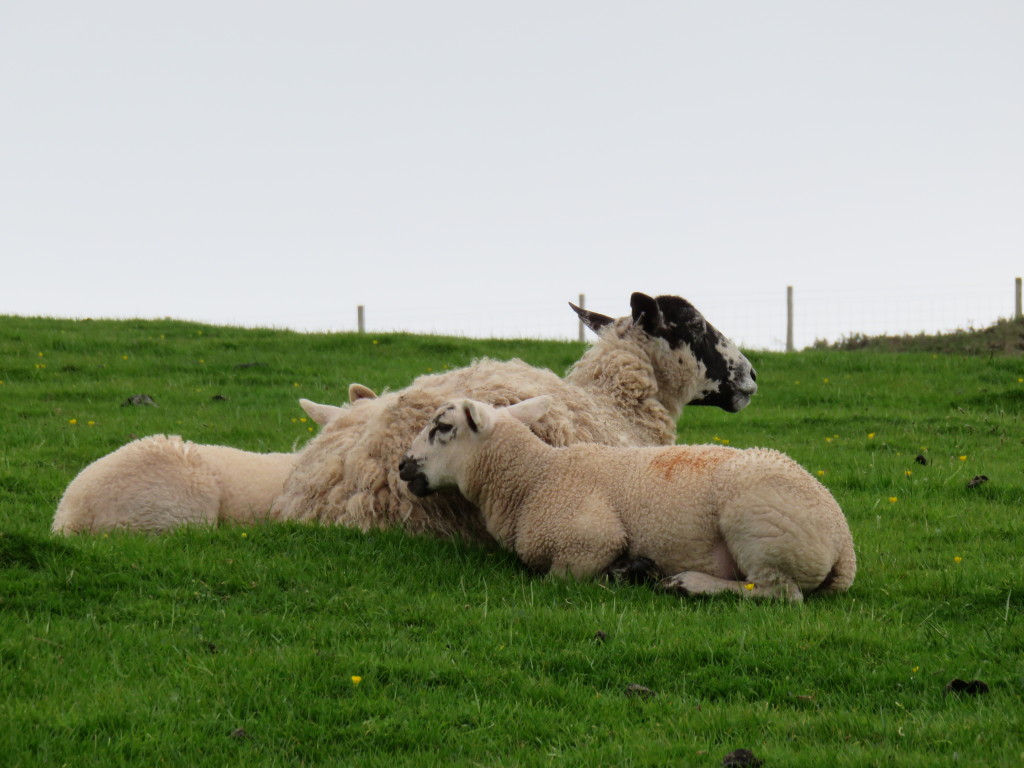
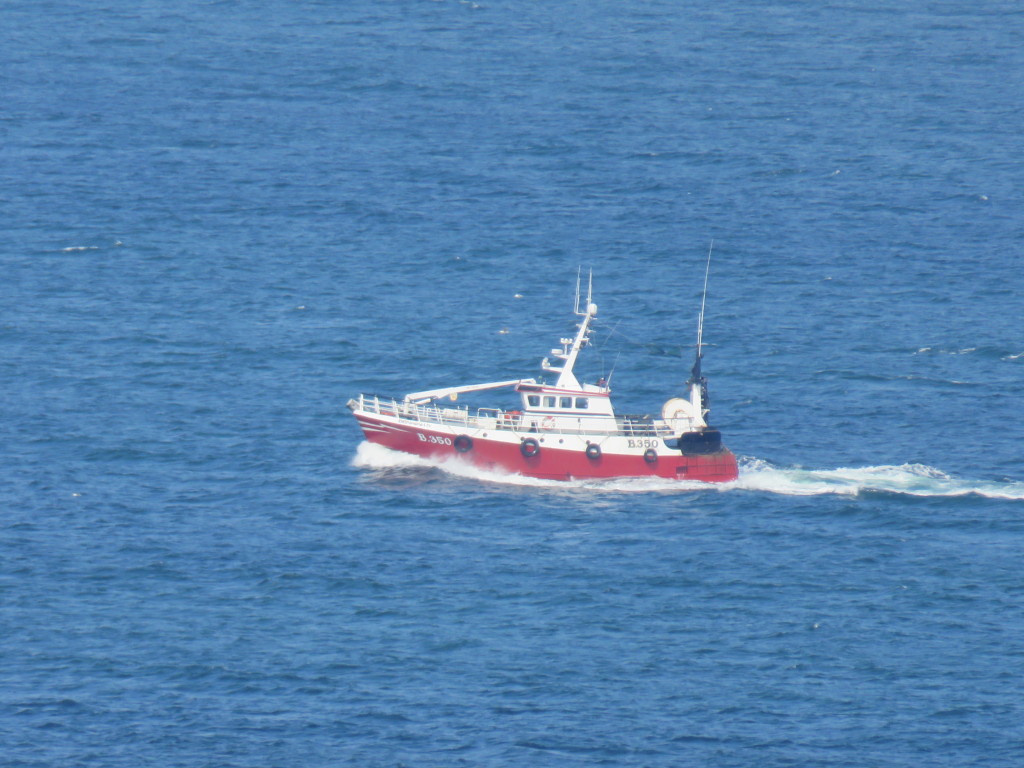
Good blog.
Hello you happy trampers. Thanks for taking us along with you. Now I’m not sure if your paths will cross but …. on Sunday evening I watched a documentary about the sacred places of Britain and it mentioned that after the monks at Lindesfarne had been raided by Vikings, they packed up what remained of their valuables – including St. Cuthbert in his coffin – and wandered hither and yon right across North England for 8 years and eventually stopped on the coast of the Irish Sea. I wonder if you will cross the meandering paths taken by St. Cuthbert’s monks on your way to the North Sea? All the best for pleasant sunny days ahead.
Hi Graham, thanks for your interest. We haven’t seen anything that might relate to these folks so far! But the soil scientist in our midst may have more to say on the matter. Let’s see! Cheers.
Hi Dad,
Really fantastic post and photos. But there don’t seem to be many of you… I guess that’s because you are behind the camera. If they don’t let me out until I’m 70, at least I can experience the C2C vicariously…. Keep the posts coming, I’m really enjoying this!!
Len and all: Hope you are having a pleasant ramble with no blisters or aches-&-pains. I should have mentioned that the perambulating monks dropped St Cuthbert’s bones off at Ripon (which I think is south of your line of progress) and when Durham Cathedral was built (north of your line) he was deposited in there.
Thanks for the photos around St. Bees – they bring to life a place that was, for me, just a dot on the map
Thanks Graham. I almost have another post ready to go. All five of us are still on the path! But some others that we’ve heard about have had to ‘give it away’, or travel in the luggage van for a few days while they recover from their injuries. And we’ve witnessed some amazing feats of courage and endurance – all still to come in future posts.
All I will say right now is that nothing that I read before starting (quite a lot) or watched (Julia Bradbury’s TV series) prepared me for how tough and demanding (or exhilarating) this adventure really is.
And Michael, thanks heaps for your comments. I reckon this will be a perfect adventure for you, Chika and George when he is in his mid- to late teens!
Hi Len
Nice blog. I like reading it.
Groetjes Ilonka
Many thanks, Ilonka. I’ll keep going with it as I get a chance. Not even my Hotel in Paris has WiFi good enough for blogging ….. I’m in McDonalds at the moment!
Pleased you made it home safely. Cheers, Len